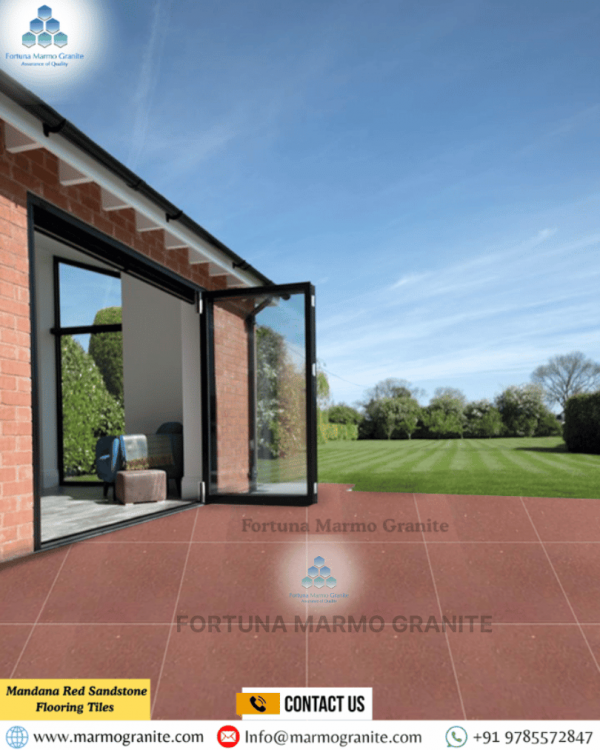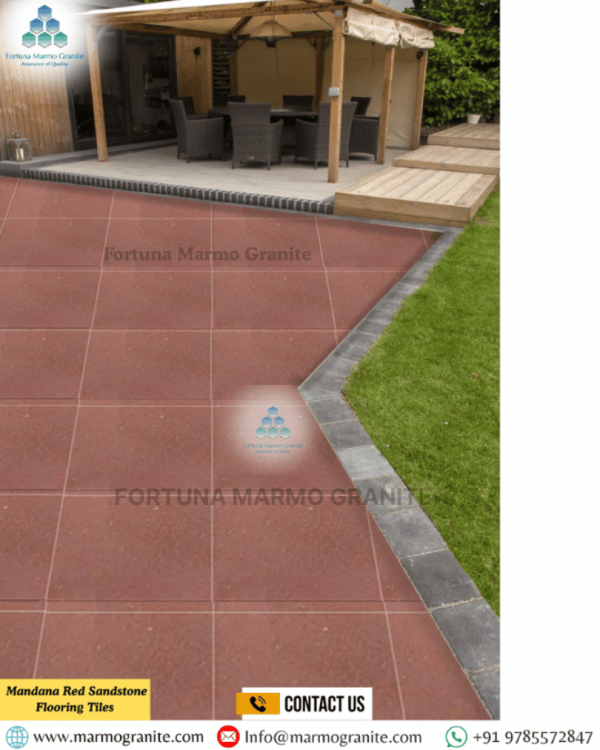Mandana Red Sandstone – A Natural Stone That Stands the Test of Time
Mandana Red Sandstone Supplier, a timeless gift from the earth, is more than a stone—it reflects India's heritage, artistic traditions, and the enduring bond between humans and nature. Quarried extensively from the rugged terrains of Mandana village near Kota in Rajasthan, this sandstone has shaped Indian architecture for generations. Its deep red and brown tones, often accented with grey, lend a rustic yet regal charm that enhances the beauty of any structure. Whether in ancient forts or modern villas, Mandana Red Sandstone preserves its elegance and strength over centuries.
Mandana Red Sandstone Supplier, Architects and designers increasingly choose this stone for sustainable building solutions. It is environmentally friendly, locally sourced, and requires minimal maintenance. Its natural rough texture suits heritage restorations and projects demanding an antique or earthy look. As global demand grows for authentic, durable, and character-rich materials, Mandana Red Sandstone shines as more than a construction element—it tells the story of India's geological legacy, centuries of craftsmanship, and a sustainable future built on nature itself.


The Genesis of Enduring Beauty: Formation and Characteristics
The story of Mandana Red Sandstone begins millions of years ago, etched into the very fabric of the Earth's history. Formed from ancient riverbeds and deltas, it is a sedimentary rock primarily composed of quartz grains cemented together by iron oxides, particularly hematite. It is this iron content that bestows upon it its distinctive and celebrated reddish-brown hues, ranging from a soft, earthy terracotta to a deep, rich oxblood. The specific geological conditions, including the presence of iron-rich groundwater and the intense pressure of overlying sediments, contributed to its remarkable density and low porosity.
Unlike many other natural stones, Mandana Red Sandstone boasts a fine-grained, homogeneous texture. This uniformity, combined with its inherent strength, makes it an exceptionally durable material. Its compressive strength is impressive, allowing it to bear substantial loads without fracturing. Furthermore, its low water absorption rate is a critical factor in its longevity, particularly in climates with fluctuating temperatures and rainfall. This resistance to moisture ingress prevents the detrimental effects of freeze-thaw cycles, efflorescence, and the growth of mold and mildew, all of which can compromise the integrity and appearance of lesser materials over time.
A Legacy Etched in Stone: Historical Significance and Applications
Generations of builders and artisans have recognized the enduring qualities of Mandana Red Sandstone. People have used it in the Indian subcontinent for millennia, with evidence tracing back to ancient civilizations. Majestic forts and palaces in Rajasthan, such as the iconic Mehrangarh Fort in Jodhpur and Chittorgarh Fort, showcase its timeless appeal. The stone also features in intricate temples and stepwells scattered across the region, playing a pivotal role in shaping the architectural heritage.
These historical structures prove the stone's exceptional durability. Despite centuries of exposure to harsh heat, monsoons, and heavy human activity, these edifices continue to inspire awe and admiration.
Beyond monumental and decorative architecture, builders have long valued Mandana Red Sandstone for its practicality and performance in everyday use. This natural stone features a deep reddish-brown hue and consistent texture. It is both durable and versatile, making it suitable for historical and modern settings. In traditional Indian homes and courtyards, it is commonly used for flooring. Its slip-resistant surface ensures safety, even in wet or high-traffic areas. The stone's density and thermal properties absorb and release heat gradually. This helps regulate indoor temperatures and enhances energy efficiency.
Modern Resurgence: Contemporary Applications and Enduring Appeal
In contemporary construction, Mandana Red Sandstone is widely used for:
Flooring: Mandana Red Sandstone's exceptional hardness and slip resistance make it ideal for both indoor and outdoor flooring. Use it for patios, walkways, pool surrounds, and high-traffic commercial areas. It withstands heavy footfall and abrasive elements, ensuring a long-lasting, low-maintenance surface.
Cladding and Facades: Its natural beauty and weather resistance suit building exteriors perfectly. The stone creates a striking, durable facade that ages gracefully. Its thermal properties also help improve energy efficiency.
Wall Cladding: Use it for accent walls or entire interior spaces. Mandana Red Sandstone adds warmth, texture, and natural luxury. Its varied tones can create either a soothing, earthy ambiance or a bold, dramatic statement.
Landscaping: For garden pathways, walls, steps, or decorative features, the stone blends seamlessly with natural environments. Its resistance to erosion and weathering ensures lasting beauty outdoors.
Countertops and Vanities: Though less common than granite or marble, treated Mandana Red Sandstone offers a unique, robust option for countertops and vanities. Its rustic, natural look adds character. Regular sealing is recommended for these surfaces.
Paving and Cobbles: Its strength and non-slip qualities make it perfect for driveways, courtyards, and public squares. It provides a durable, visually appealing surface that withstands heavy vehicular traffic.
The Art of Maintenance: Ensuring Longevity
Cleaning: Sweep regularly and wash occasionally with clear water for general maintenance. For stubborn dirt, use a pH-neutral stone cleaner diluted according to the manufacturer's instructions. Avoid harsh chemicals, acidic cleaners, and abrasive scrubbing pads, as they can damage the stone and compromise its natural sealer.
Sealing: Mandana Red Sandstone has low porosity, but applying a high-quality impregnating sealer can enhance stain resistance, especially in high-traffic areas or spaces prone to spills, like kitchens. Sealers penetrate the stone and create an invisible barrier that repels liquids without changing its appearance. Reapply every few years, depending on the sealer type and usage.
Addressing Spills: Wipe up spills immediately, especially from acidic substances such as citrus juice, wine, or vinegar, to prevent etching or staining.
Protection: In busy indoor areas, use rugs or mats at entryways to trap dirt and grit, reducing abrasive wear. For outdoor furniture, place felt pads or coasters under items to prevent scratches.
Conclusion
Indian Sandstones Supplier , Mandana Red Sandstone is a true testament to the timeless allure and strength of natural stone. Moreover, Revered for its rich earthy tones, remarkable durability, and non-slippery surface, this sandstone has played a crucial role in shaping architectural landscapes across India and beyond for centuries. Mandana Red Sandstone Supplier, Whether used in heritage structures, grand public buildings, outdoor paving, or modern commercial spaces.
Indian Granite Supplier At Fortuna Marmo Granite, we proudly bring this historic stone to global markets, ensuring that every block, tile, and slab reflects the finest quality and craftsmanship. Moreover, Our team is dedicated to maintaining the legacy of Indian sandstone by offering stones that are ethically sourced, meticulously processed, and tailored to meet the evolving needs of contemporary construction and design. In addition, As a leading manufacturer and exporter of natural stones, Further, we understand the importance of delivering products that blend aesthetic excellence with unmatched functionality. When you choose Mandana Red Sandstone from Fortuna Marmo Granite.

